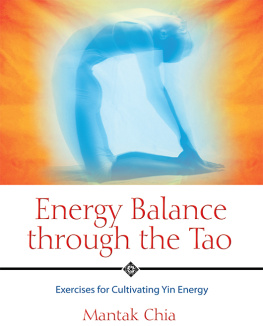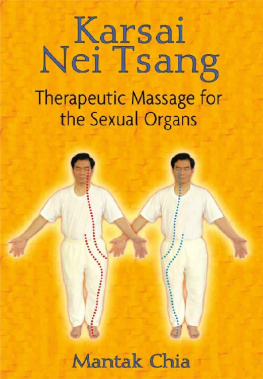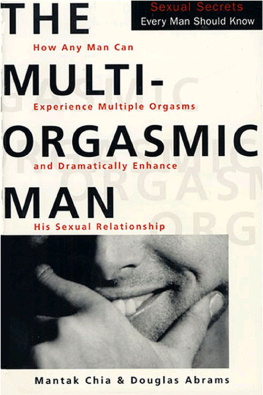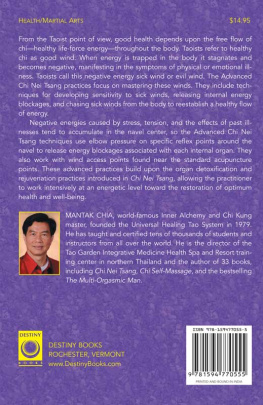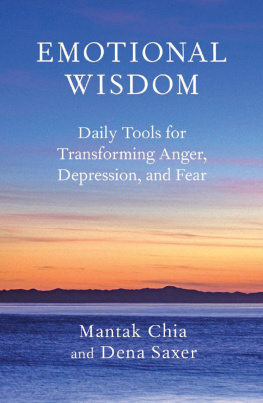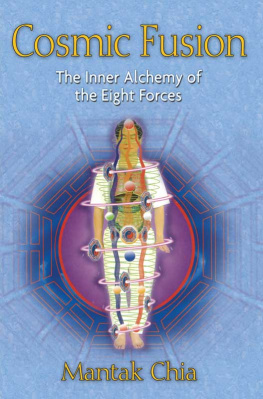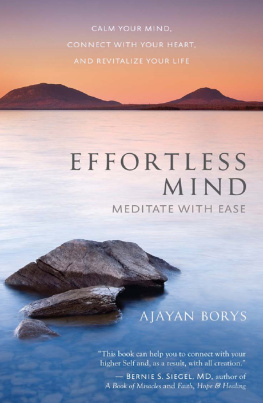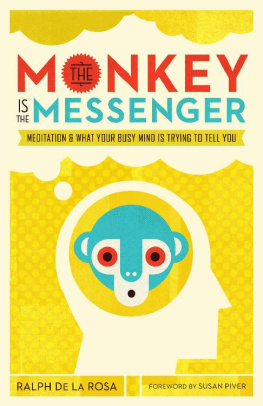
Acknowledgments
The Universal Tao Publications staff involved in the preparation and production of Living in the Tao: The Effortless Path of Self-Discovery extend our gratitude to the many generations of Taoist Masters who have passed on their special lineage, in the form of an unbroken oral transmission, over thousands of years. We thank Taoist Master I Yun (Yi Eng) for his openness in transmitting the formulas of Taoist Inner Alchemy.
We offer our eternal gratitude to our parents and teachers for their many gifts to us. Remembering them brings joy and satisfaction to our continued efforts in presenting the Universal Tao system. As always, their contribution has been crucial in presenting the concepts and techniques of the Universal Tao.
We wish to thank the thousands of unknown men and women of the Chinese healing arts who developed many of the methods and ideas presented in this book. We offer our gratitude to Bob Zuraw for sharing his kindness, healing techniques, and Taoist understandings.
We thank the many contributors essential to this books final form: Juan Li for the use of his beautiful and visionary drawings, illustrating Taoist esoteric practices, the editorial and production staff at Inner Traditions/Destiny Books for their efforts to clarify the text and produce a handsome new edition of the book, and Susannah Noel for her line edit of the new edition.
We wish to thank the following people for their assistance in producing the original and revised editions of this book: Lee Holden for his editorial work and writing contributions, as well as his ideas for the cover; Otto Thamboon for his artisic contributions to the revised edition of this book; our senior instructors, Wilbert Wils and Saumya Wils, for their insightful contributions to the revised edition; and especially Charles Morris for inspiring and reorganizing the book. Without him the book would not have come to be.
A special thanks goes to our Thai production team: Raruen Keawapadung, computer graphics; Saysunee Yongyod, photographer; Udon Jandee, illustrator; and Saniem Chaisarn, production designer.
Putting Living in the Tao into Practice
The practices described in this book have been used successfully for thousands of years by Taoists trained by personal instruction. Readers should not undertake the practice without receiving personal transmission and training from a certified instructor of the Universal Tao, because certain of these practices, if done improperly, may cause injury or result in health problems. This book is intended to supplement individual training by the Universal Healing Tao and to serve as a reference guide for these practices. Anyone who undertakes these practices on the basis of this book alone does so entirely at his or her own risk.
The meditations, practices, and techniques described herein are not intended to be used as an alternative or substitute for professional medical treatment and care. If any readers are suffering from illnesses based on mental or emotional disorders, an appropriate professional health care practitioner or therapist should be consulted. Such problems should be corrected before you start training.
Neither the Universal Healing Tao nor its instructors can be responsible for the consequences of any practice or misuse of the information contained in this book. If the reader undertakes any exercise without strictly following the instructions, notes, and warnings, the responsibility must lie solely with the reader.
This book does not attempt to give any medical diagnosis, treatment, prescription, or remedial recommendation in relation to any disease, ailment, suffering, or physical condition whatsoever.
Preface
Through the ages, we have been influenced by mythical schools, religions, governments, and now corporations. They have convinced us to give them our time and energy (essence)for the good of others, but mostly for themselves. They promised they would take care of us or save us. When we gave everything, we had no time or energy left for ourselves, and in the end we had nothing except their promises. Other systems have taught us how to cultivate and grow our energy like a seed into a treebut after a while, they told us they needed our energy for the good of others, and they convinced us to give them our tree for their own use. Other systems went even further, showing us how to grow flowers from our tree; and after the flowers blossomed, they had us pick them only for their beauty and sell them to others.
But the Tao teaches us not only how to plant (root) and grow our seed (energy or essence) into a tree, but also how to sexually cultivate and flower the seed to bear fruit, without losing our essence (original seed). Our tree (cultivated energy) will bear fruit by the hundreds, so we have an abundance to share with others who are sincere and deserving. Now think: in each piece of fruit that we bear, how many seeds are in it to share? So, if we cultivate our original seed in the Tao, instead of giving it away as other systems advise, we can share thousands of seeds for the good of others, and never lose our original seed (essence). In this book you will discover the way of the Tao and how to implement it in your life as you put up your feet and enjoy the ride. Remember there are no original thoughts in the universethey are either used or misusedand whatever you are seeking in life, it is seeking you. So sit still, and when it comes, join and flow with it.
YOUR FRIEND IN THE TAO,
WILLIAM U. WEI,
WEI TZUTHE PROFESSORMASTER OF NOTHINGNESS,
THE MYTH THAT TAKES THE MYSTERY OUT OF MYSTICISM
Vision from Within
FEEL WITH THE MIND
When you look within, you begin to see what really is; and this is the beginning of your understanding of the Tao. That is the key factor and it takes the mystery out of mysticism.
We typically do not see what really is when we look at the world, because our entire thinking process is reversed from thinking in the Tao. In the West, we learn to think with our minds and feel with our hearts. In the Tao, we learn to think with our hearts and feel with our minds.
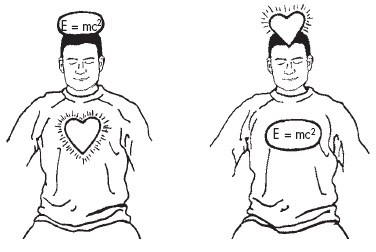
Fig 1.1. Think with your heart and feel with your mind.
In the West, what we are doing is training the mind to think or make decisions. But what we should do is let the mind do its natural function, which is to feel or observe. In the Tao, we are training the mind how to feel and observe. To use an allegory, think of the mind as an observatory tower: it observes what is. That is what the Tao is all about.
We all know what it is to think with our mind; in the West, we are trained to think things out logically. In reality, that is not what the mind is all about. The mind was made to observe. It is like driving a car. Who is driving, you or the car? The car is the mind. The car is an instrument, so the mind is an instrument. It is a tool; it does not have a mind of its own, so to speak. So it has to know where to go. It is a function; it is a retrieving machine or station. In other words, messages are sent to the body or from the body, then to the mind, and then to another part of the body. What the mind does is observe. Another word for observe is to feel or sense. This is the minds real purpose: to feel or to observe. How it observes is through the five senses. This is the feeling process.
We do not make a judgment on something; we simply witness it. We see it for what it really is and the direction on what to do comes from the heart. To do this, we must learn to think with the heart. To feel with the heart or to think with the heart we have to slow down the mind. The way to slow down the mind is through meditation. When you slow down the mind, you start to separate molecularly the two charges in the universe: the positive and the negative, the electron and the proton; and, as you slow down these two opposite forces, they separate, and as they separate there is a void. The observatory tower (the mind) then enters this void.
Next page

